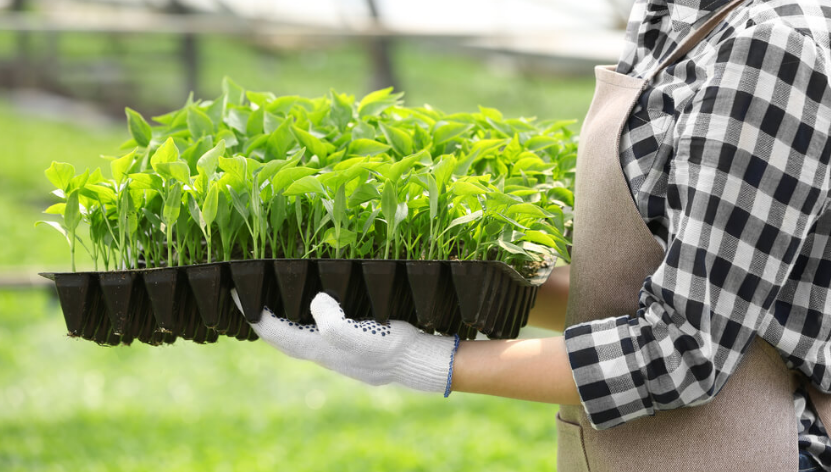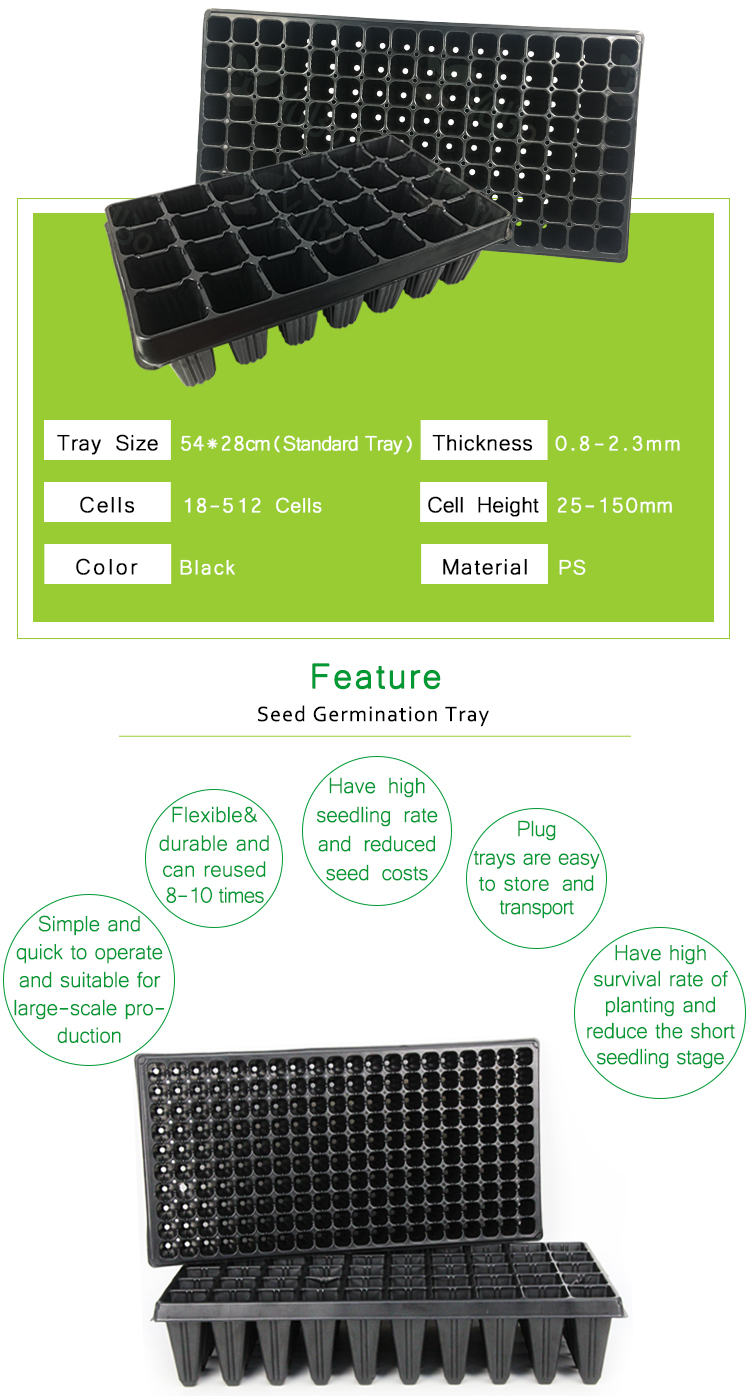Seedling cultivation has always been the top priority in vegetable cultivation management. Vegetables have many shortcomings in traditional seedling cultivation, such as low rates of strong seedlings and uniform seedlings, and seed trays can make up for these shortcomings. Let’s learn about the technical methods of planting vegetables in seedling trays.
1. Selection of seed trays
The size of the seed tray is generally 54*28cm, and the commonly used specifications are 32 holes, 72 holes, 105 holes, 128 holes, 288 holes, etc. Choose different specifications of seed trays according to the size of the vegetable seedlings. For large seedlings, choose seed trays with fewer holes, and for small seedlings, choose seed trays with more holes. For example: for tomato seedlings with 6-7 true leaves, choose 72 holes, and for tomatoes with 4-5 true leaves, choose 105 or 128 holes.
2. Seed tray disinfection
Except for new trays used for the first time, old trays must be disinfected before seedling cultivation to prevent the spread of pathogens through nursery trays. There are several methods of disinfection. One is to soak the seedling tray with 0.1% to 0.5% potassium permanganate solution for more than 4 hours; the second is to spray the seedling tray with 1% to 2% formalin solution, and then cover it with plastic film and fumigate it for 24 hours; the third is to soak it with 10% bleaching powder for 10 to 20 minutes, and then wash the seedling tray with clean water for use.
3. Sowing period
The determination of the sowing period is generally based on the three aspects of cultivation purpose (early maturity or extended autumn), cultivation method (facility cultivation or land cultivation) and temperature requirements for vegetable growth. Generally, sowing is done about one month before the transplanting of vegetable seedlings.
4. Preparation of nutrient soil
Nutrient soil can be purchased as a ready-made seedling substrate, or it can be prepared by yourself according to the formula of peat: vermiculite: perlite = 2:1:1. Mix 200g of 50% carbendazim wettable powder into each cubic meter of nutrient soil for disinfection and sterilization. Mixing 2.5kg of high-phosphorus compound fertilizer into each cubic meter of nutrient soil will help rooting and strengthening seedlings.
5. Sowing
Add water to the nutrient soil and stir until it is moist, then put the wet substrate into a tray and smooth it with a long wooden stick. The installed substrate should be pressed to facilitate the placement of seeds. The hole pressure depth is 0.5-1cm. Insert the coated seeds into the holes by hand, one seed per hole. Cover with dry nutrient soil, then use a scraper to scrape from one end of the hole tray to the other end, remove the excess nutrient soil, and make it level with the hole tray. After sowing, the hole tray should be watered in time. Visual inspection is to see water droplets at the bottom of the hole tray.
6. Management after sowing
The seeds require higher temperature and humidity during germination. The temperature is generally maintained at 32~35℃, and 18~20℃ at night. No watering before germination. After germination to true leaves unfolding, watering should be increased in time according to the soil moisture of the seedbed, alternating between dry and wet, and each watering should be watered thoroughly. If the temperature in the greenhouse exceeds 35℃, ventilation should be carried out to cool down the greenhouse, and the ground film should be removed in time to avoid high temperature burning of seedlings.
Vegetable seedling trays can effectively cultivate strong seedlings, improve the quality of vegetable seedlings, and increase the economic benefits of vegetable planting. Xi’an Yubo provides a full range of seed trays to provide more choices for your vegetable planting
Post time: Aug-23-2024






